|
|
 |
|
November 18, 2012
It is about to begin, the long, hedonistic march through the holidays,
beginning with Thanksgiving.
No other time of year inspires such passion
for the grape. The great Champagne houses of France, for example, tally roughly
half their annual sales in the United States between Thanksgiving and New Year’s
Day. In the coming weeks the wine enthusiast and casual sipper alike will be
barraged with suggestions and recommendations; well-intentioned advice meant to
guide them to just the right wine no matter the occasion.
If you love
wine, if you drink wine, if you might possibly make a gift of wine, you are in
the crosshairs. Everyone in the wine business wants you.
 This is especially true in the run-up to the Thanksgiving feast,
which is the most wine friendly of all the traditional holidays. That’s because
a roast turkey, the staple of Thanksgiving tradition, is extremely versatile –
an excellent match with either red or white wine. This is especially true in the run-up to the Thanksgiving feast,
which is the most wine friendly of all the traditional holidays. That’s because
a roast turkey, the staple of Thanksgiving tradition, is extremely versatile –
an excellent match with either red or white wine.
What’s more, the
combination of sweet (cranberry sauce, candied sweet potatoes) and savory
(earthy stuffing, gravy, mashed or roasted potatoes) side dishes open up endless
possibilities for pleasing wine pairings. Which brings me to my most important
point on the subject of wine selection for the Thanksgiving feast: Don’t be
afraid to serve the wines you like because, in most cases, you will find that it
works.
That goes against the conventional wisdom that for years has held
that Beaujolais, the fruity red wine of southern Burgundy, is the perfect
accompaniment to Thanksgiving. Beaujolais is a good choice, the safe choice, but
certainly not the only choice.
In my humble opinion, serving multiple
wines at once, both red and white and occasionally sparkling, is the only way to
fully address the diverse flavors and aromas presented by the traditional
Thanksgiving feast. With that in mind, I offer a few suggestions and
recommendations based upon my experience as the wine source for more family
gatherings at the Thanksgiving table than I care to remember.
SPARKLING WINE
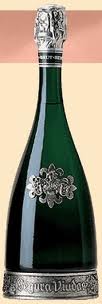 Thanksgiving is not the occasion for expensive Champagne or
domestic bubbly of that ilk. At the Thanksgiving feast I serve bubbly as an
aperitif or with dessert, and occasionally during the meal. Prosecco from Italy
and cava from Spain are ideal in this circumstance. These are delicious
sparkling wines that are affordable and thus perfect for a crowd of any
size. Thanksgiving is not the occasion for expensive Champagne or
domestic bubbly of that ilk. At the Thanksgiving feast I serve bubbly as an
aperitif or with dessert, and occasionally during the meal. Prosecco from Italy
and cava from Spain are ideal in this circumstance. These are delicious
sparkling wines that are affordable and thus perfect for a crowd of any
size.
Cava, the traditional sparkling wine of Spain, has been on the rise
in recent years due to ongoing improvements in quality combined with
affordability. The Segura Viudas Brut Cava Reserva Heredad, Spain ($20) is
especially attractive because it’s delicious and beautifully packaged in a
uniquely shaped bottle with metal trim. The current release won a gold award at
the recent Sommelier Challenge wine competition. Other cava awarded honors by
the sommeliers: Freixenet Elyssia Pinot Noir Brut Cava, ($18) and Vilarnau Brut
Cava ($15).
Prosecco, too, has enjoyed renewed interest tied to improving
quality and affordability. Produced in Italy’s Veneto region just outside of
Venice, Prosecco is usually made in a brut or extra dry style, lending itself
nicely to the sweet and savory nuances of the Thanksgiving feast. These three
are all excellent selections for the price, and all were honored with medals at
the Sommelier Challenge: Cupcake Prosecco DOC ($14), Stellina di Notte, Prosecco
DOC ($14) and Voveti Prosecco DOC, ($18).
WHITE WINE
 The Thanksgiving feast provides a perfect foil for Chardonnay,
especially those from California that exhibit riper flavors and an oily texture.
This is where the spice nuances that are a direct result of barrel fermentation
and aging come into play. Thanksgiving faire is inherently spicy, often on the
sweeter side, and this plays nicely with Chardonnay. The Thanksgiving feast provides a perfect foil for Chardonnay,
especially those from California that exhibit riper flavors and an oily texture.
This is where the spice nuances that are a direct result of barrel fermentation
and aging come into play. Thanksgiving faire is inherently spicy, often on the
sweeter side, and this plays nicely with Chardonnay.
Oregon Pinot Gris,
spicy Gewurztraminer and zesty Riesling work well, too. I try to avoid lighter
whites such as Pinot Grigio because those wines often won’t stand up to the
strong flavors of Thanksgiving.
My go-to Chardonnay in this situation is
the wonderfully balanced Bourchaine Chardonnay made by legendary winemaker Mike
Richmond, who was a pioneer in the Carnerous region of the Napa Valley, where
Bouchaine is located, more than 30 years ago. Bouchaine’s 2010 Estate Chardonnay
($30) was a gold-medal winner at the Sommelier Challenge and represents
Richmond’s deft hand with this grape at its finest. For the bargain hunter who
wants to pay less but still maintain high quality, the Rodney Strong 2010 Estate
Chardonnay, Chalk Hill ($20) is a good bet.
My sleeper white wine won’t
be easy to find, but it would be well worth the effort if you could snag a
bottle of the 2011 Dr. Konstantin Frank Gewurztraminer Reserve, Finger Lakes
($25). This is a dry gewurz with spice and floral notes on the nose, a rich,
oily texture and tremendous length. Unlike most dry gewurz, it does not finish
with a bitter aftertaste. The Finger Lakes region of upstate New York is a
dynamic region for the Alsatian grape varieties Gewurztraminer and
Riesling.
If you enjoy Pinot Gris, you must try the 2011 Handley Cellars
Pinot Gris, Helluva Vineyard, Anderson Valley ($20). The quality of the wine
definitely matches up to the name of the vineyard. Riesling to seek: Kilakanoon
2011 Riesling, Mort’s Reserve, Clare Valley, Australia
($35).
RED WINE
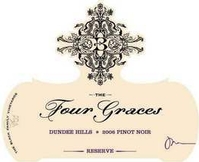 For many wine enthusiasts, the reds are the main event. This is where
I often dip into my cellar and reach for something I’ve been saving for a
special occasion. For many wine enthusiasts, the reds are the main event. This is where
I often dip into my cellar and reach for something I’ve been saving for a
special occasion.
That’s often older Bordeaux or an older Cabernet
Sauvignon. Neither would be my first instinct if the wines were young because
youthful, tannic reds are usually too strong for the delicate flavor of turkey.
But older vintages that have mellowed can be just right.
If you are going
to drink young reds, best to stick with Beaujolais and Pinot Noir. Beaujolais is
made from the Gamay grape and is frequently floral on the nose, shows soft
tannin, and bright, juicy fruit on the palate. Georges Duboeuf is the leading
purveyor of Beaujolais in the United States, though top Burgundy negociants such
as Maison Louis Jadot and Joseph Drouhin also bring top-notch Beaujolais to the
U.S. market. Know that the 2009 and 2010 vintages were exceptional in Beaujolais
and the prices remain good despite the acclaim. Beaujolais from any of these
three producers will prove satisfying as well as affordable.
The focal
point of my Thanksgving feast will be Pinot Noir from Oregon and
California.
In recent years the Pinot Noir from Oregon’s Four Graces has
been some of the finest produced in the U.S. My favorite of the Four Graces
Pinots tasted over the past year is the Dundee Hills Reserve ($45), a rich,
full-bodied Pinot that exhibits complex layers of red and black fruits. This
wine won a platinum award at the Critics Challenge in May.
NASCAR legend
Jeff Gordon also impressed this year with the 2009 Jeff Gordon Cellars Pinot
Noir, Sonoma Coast ($56), which tied for best pinot noir at the Sommelier
Challenge. The other top Pinot at the Sommelier Challenge was the 2011 Acacia
Pinot Noir, Carneros ($28). The Acacia shows more flavor in the red-fruit range,
the Jeff Gordon more in the black-fruit range, so you can pick your
poison.
Follow Robert on Twitter at @wineguru.
Posted by Robert Whitley at 10:41 AM
|
|
November 14, 2012
I must admit I was surprised when I first saw the Frogtown Cellars wines pop
up in one of my wine competitions a few years back.
What caught my eye was the striking packaging. It was edgy but attractive,
and it made me want to know more. I was stunned when I started to read the
labels and saw that the wines were from Lumpkin County, Georgia. Could they
really be any good and live up to the inviting packaging?
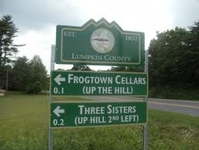 I had my answer soon enough. The Frogtown wines won their
share of medals, and ever since have been a consistent winner in my four
international wine competitions -- Critics Challenge, Winemaker Challenge,
Sommelier Challenge and the venerable San Diego International, which will
celebrate its 30th anniversary with the event in 2013. I had my answer soon enough. The Frogtown wines won their
share of medals, and ever since have been a consistent winner in my four
international wine competitions -- Critics Challenge, Winemaker Challenge,
Sommelier Challenge and the venerable San Diego International, which will
celebrate its 30th anniversary with the event in 2013.
The Frogtown wines have passed muster with a varied and highly skilled roster
of wine judges, and they've done it over several vintages, so their success is
no fluke. I've tasted many of them during and after each competition and would
not hesitate to serve them side by side with fine wines from all over the
world.
Originally, however, I was skeptical. The Georgia I know is very warm and
humid in the summer months, so I asked about that the first time I chatted with
Frogtown winemaker/owner Craig Kritzer.
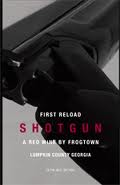 Frogtown, and other good Georgia wineries, are situated in the
western part of the state, in the foothills of the Smoky Mountains. The climate
is warm but dry, and the evenings are not the oppresive nights I remember from
trips to Atlanta in my youth. Frogtown, and other good Georgia wineries, are situated in the
western part of the state, in the foothills of the Smoky Mountains. The climate
is warm but dry, and the evenings are not the oppresive nights I remember from
trips to Atlanta in my youth.
Because of the absence, or sparcity, of viticultural history in Georgia,
Frogtown may benefit somewhat from low expectations. Kritzer also has a free
hand to explore eclectic grape varieties and blends, for no one really knows
what to expect from Georgia wine.
A case in point is the Frogtown Shotgun, a multi-vintage blended red table
wine that retails for $25. The first release, dubbed First Reload, was a blend
of Tannat, Touriga Nacional and Cabernet Franc. The Second Reload, which I've
just sampled, includes the same grape varieties plus Merlot.
It is billed a a bold but supple blend, which should be a head-scratcher if
you know anything about Tannat, the tannic red-wine grape indigenous to
southwestern France. At Frogtown Tannat works. It's tannic all right, but not
with the coarse, rustic texture of Tannat from France. Touriga, of course, is
the most important grape of the Port region in Portugal's Douro Valley, while
Cab Franc and Merlot are so-called "international" grape varieties that are
planted throughout the world.
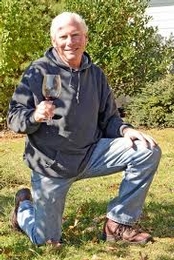 Shotgun from
Frogtown is a savory wine, well balanced (less than 14 percent alcohol by
volume) with complex red and black fruit aromas, and hints of spice. It will not
be easy to find, however. Wine-searcher.com lists it for sale only at the
winery, and depending upon the laws in your state you may or may not be able to
purchase it and have it shipped. Shotgun from
Frogtown is a savory wine, well balanced (less than 14 percent alcohol by
volume) with complex red and black fruit aromas, and hints of spice. It will not
be easy to find, however. Wine-searcher.com lists it for sale only at the
winery, and depending upon the laws in your state you may or may not be able to
purchase it and have it shipped.
That said, it is a very interesting wine, in fact a daring wine, being made
in a corner of the world where you would least expect to find such cutting edge
viticulture. At the very least, you should know of its existence.
Posted by Robert Whitley at 11:53 AM
|
|
November 7, 2012
My friend Susan looked perplexed when I told her I was heading off to spend a couple of days in Paso Robles. “Isn’t that a dance?” she asked. Well, no. She was thinking of the Paso Doble, that Spanish dance often associated with bullfights, while Paso Robles is one of California’s premiere wine regions. Located about halfway between San Francisco and Los Angeles, Paso was for years just a sleepy dot on the map. Today the little town (population about 30,000) has become a California-chic destination for wine lovers, spa and hot springs aficionados, golfers, equestrians and a host of other vacationers looking to spend a few days in a friendly and stunningly beautiful western setting. And if you go there, you’re bound to eat  well, for as one local vintner told me, “Wine begets food.” well, for as one local vintner told me, “Wine begets food.”
In an upcoming blog I’ll review a few of the wineries I visited, but right now I want to mention couple of those places in Paso where a visitor will indeed eat well. The hottest eatery in town these days is Artisan (1401 Park Street, Paso Robles, Tel. 805 238-2834). When I had dinner there one night the evening began with fried razor clams tossed with cucumbers and melon, plus a dousing of jalapeño vinaigrette. These appetizing little morsels were perfectly paired with Kenneth Volk Verdelho 2011. The fried clams and spicy jolt of jalapeño were nicely mellowed by the wine’s bracing zing and fruity follow-through (in fact I’m convinced that this Verdelho would be terrific with just about any good fried food). Lone Madrone Nebiollo 2006 was an inspired match with duck breast perched on a bed of fresh corn polenta and tarragon-spiced chimichurri, and the vibrant cherry fruitiness of Anglim Grenache 2009 was a succulent link to a serving of pasta with octopus and preserved lemon. Heading into the meal’s home stretch with perfectly grilled hanger steak, Linne Calodo “Rising Tides” Syrah/Grenache/Mourvèdre 2007delivered layers of dark fruits, leather, fennel seed and other spices that soothed the soul and reinvigorated the appetite just in time for dessert (among the temptations apple crisp with whiskey raisin ice cream strikes me as a no-brainer).
Bistro Laurent (1202 Pine Street, Paso Robles, Tel. 805 610-8191) one of Paso’s most urbane restaurants, has a convenient corner location just off the town’s main square. Chilled cucumber-tomato soup, a refreshing tonic on the warm autumn evening I was there, was admirably paired with the mellifluous yet satisfyingly dry Pomar Junction Viognier 2010. (Whites make up only about 20% of Paso’s wine, with the best ones mostly based on Rhône grapes such as Viognier, Roussanne and Viognier). Seared Opa (a delicate Hawaiian fish) bathed in saffron sauce was likewise good with the Viognier, but was even more luscious with Mooney Family Grenache/Syrah 2008. A savory onion tart garnished with rabbit confit was made even more delectable by being paired with J. Dusi Zinfandel 2009, an intensely fruity, succulent, medium-bodied Zin. At the conclusion of the splendid dinner chocolate mousse partnered by Pomar Station Late Harvest Viognier 2010 teetered just this side of overkill, but in the end the wine’s balanced acidity prevailed.
McFee’s Grill (416 South Main Street, Templeton, Tel. 805 434-3204), a local favorite, is where cowboy cuisine and fine wine convene. McFee’s eclectic menu wanders through a range of different culinary themes, from Jambalaya pasta, to Kung Fu baby back ribs, to ancho duck and cheese quesadilla. The steaks and burgers are sure to please any real or wannabe cowgirl or cowboy, especially when there are such beef-friendly wines on hand as J. Lohr Cuvée Pom 2006 (an immensely satisfying and well-rounded Bordeaux style blend); Hearst Malbec 2010 (inky and mouth-watering, with mint, sage, mocha and black fruit); and Justin “Isosceles” 2009, a famously rich and savory Bordeaux style red blend.
After such over-indulgences one needs to retire to a comfortable bed in hospitable surroundings, and La Bellasera Hotel and Suites (206 Alexa Court, Paso Robles, Tel. 805 238-2834) is just such a place. Bellasera’s decor lavishly interprets Mediterranean luxury, and the suites tend to be spacious and comfortable. One of the best things about Bellasera is its exceptionally friendly and helpful staff. Some guests may find the hotel’s unromantic setting disappointing for it looms up at the cusp of a highway interchange, but the lack of surrounding scenery is compensated for by the fact that a large strip mall housing everything from Starbucks to Target is an easy 2 minute stroll away.
Want to sleep at a small working winery? Book a room at Venteux Vineyards (1795 Las Tablas Road, Templeton, Tel. 805 369-0127). The Venteux family-run B&B includes three charming rooms (each with private bath) nestled in a traditionally styled California farmhouse. After a warm welcome from the owners and a visit to the winery tasting room it’s a safe bet that you’ll want to settle down on the spacious and inviting front porch with a glass of that Ventoux Carignan or Viognier blend you just tasted.
For guests who prefer to be right in the heart of town there is no better place to stay than Hotel Cheval (1021 Pine Street, Paso Robles; Tel. 805 226-9995). You’ll revel in Cheval’s understated elegance and stylishly comfortable furnishings. Even if horses don’t evoke any particular interest or aspirations in you, you’ll find the interpretation of equestrian theme here enchanting, and you’ll certainly appreciate the fine selection of local wine and beers at the hotel’s bar, the Pony Club. I was lucky to be the Pony Club on an afternoon for a cheese and wine tasting, hosted by the hotel’s next-door neighbor Vivant Fine Cheese.
“We’re a bit of an outpost here in Paso,” Karl Wittstrom, owner of Ancient Peaks Winery and Margarita Adventures told me. And that is certainly one of the best things about Paso Robles. With its informal charm, wild-west scenery and laid-back hospitality Paso Robles seems happily rooted in the past, but its fine wines, chic shops and sophisticated restaurants are definitely of-the-moment. It is a rare place in these United States where such ostensible opposites come together in this compelling way.
Posted by Marguerite Thomas at 2:42 PM
|
|
November 5, 2012
Once upon a time in American viticulture, Sauvignon Blanc was the noble grape
least likely to inspire or mesmerize. California wineries in particular led the
charge to dumb down Sauvignon, first by overproduction and then by all too often
treating it dismissively in the cellar.
Sauvignon Blanc was meant to deliver a large crop that could be
processed easily and released into the market quickly for the sole purpose of
generating cash flow. The great mystery was that no one seemed to notice, or
care, that in some parts of the world, notably the Loire Valley, Bordeaux and
New Zealand, Sauvignon produced white wines that were revered.
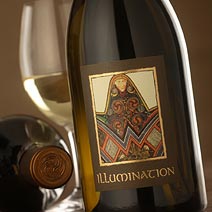 America has come around on Sauvignon, a trend that seemed to be
ignited by an attraction to the tangy, pungent Sauvignons of Marlborough, New
Zealand. Forced to compete in the marketplace, American Sauvignons got
better. America has come around on Sauvignon, a trend that seemed to be
ignited by an attraction to the tangy, pungent Sauvignons of Marlborough, New
Zealand. Forced to compete in the marketplace, American Sauvignons got
better.
Which brings me to Illumination, a Napa Valley Sauvignon that didn't exist a
decade ago. Illumination springs from a vineyard on the Quintessa estate owned
by legendary vintner Augustin Huneeus, who built Concha y Toro into Chile's most
iimportant winery and later guided Franciscan Estate to prominence in the Napa
Valley.
The care and attention to detail that Illumination devotes to Sauvignon Blanc
is an impressive example of potential fulfilled. Quintessa winemaker Charles
Thomas has a long history with high-class Sauvignon, dating back to his days as
winemaker at the Robert Mondavi Winery, which was among the first wineries in
California to take Sauvignon Blanc seriously.
He has crafted a blend of Sauvignon, Sauvignon Musque and Semillon that he
ferments in three different vessels -- egg-shaped concrete fermentation tanks
manufactured in Burgundy, stainless steel tanks and neutral French oak barrels.
The concrete tanks impart a richness and roundness that typically are achieved
only by barrel fermentation, but without the telltale scent of oak.
Stylistically this is not a Sauvignon that exhibits the pungency that is so
popular with fans of New Zealand Sauvignon. It does have some of the vibrancy,
minerality and luscious citrus character found in the Loire, but more than
anything else it offers the richness and stone fruits of a top notch Bordeaux
blanc, with a subtle honeyed note on the finish.
This is an exquisite wine, beautifully balanced and fresh, with finesse that
is rare in New World Sauvignon. It retails at the winery for $40, but I have
found it on the internet for around $30.
Whatever the price, Illumination quite simply is, in my humble opinion,
America's finest Sauvignon Blanc.
Posted by Robert Whitley at 7:17 PM
|
|
November 3, 2012
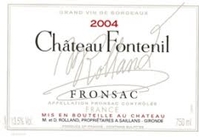 Who says you can't drink good Bordeaux on the cheap? The
weather has changed and the night air was crisp, so I reached for a bottle of
Bordeaux and came up with the 2004 Chateau Fontenil Fronsac, from a right-bank
property owned by none other than Michel Rolland. This vintage is finally coming
around and the wine was superb. Average price on WineSearcher.com is $29. Who says you can't drink good Bordeaux on the cheap? The
weather has changed and the night air was crisp, so I reached for a bottle of
Bordeaux and came up with the 2004 Chateau Fontenil Fronsac, from a right-bank
property owned by none other than Michel Rolland. This vintage is finally coming
around and the wine was superb. Average price on WineSearcher.com is $29.
When I first tasted this wine a number of years ago it was hard and
unyielding; not unpleasant, but lacking the charm it now exudes. It remains
youthful, however, and has many more years of life for those so inclined. But I
would recommend that you drink up now, for this is the sort of Bordeaux you need
in the cupboard to satisfy that Bordeaux craving while you wait for more
powerful vintages from prestige chateaux to mature.
In that sense Fronsac, an AOC next door to Pomerol, is a go-to appellation
for Bordeaux lovers in need of affordable everyday wines.
Posted by Robert Whitley at 12:33 PM
|
|
November 2, 2012
Finally, as I search for very high class but affordable red wines to serve this holiday season I can’t help but be impressed with the Penley Estate 2010 ‘Hyland’ Shiraz from Coonawarra, Australia ($20).
Penley Estate is among the most consistent wineries in this cooler area of southeastern Australia, near the Southern Ocean.
Although Coonawarra is best known for Cabernet Sauvignon, Shiraz benefits from the same conditions that make the Cabernet so successful in the area. There is sufficient warmth in the region to ripen Shiraz, but not so much to produce the high-alcohol fruit bombs typically found in the nearby Barossa Valley. The terra rosa soil also makes for wines that express minerality and earthy complexities that are very attractive.
This vintage is still so young that at this stage it’s extremely tight and not so expressive when first opened, but it’s a revelation with a bit of aeration from decanting, or after being opened overnight. This is one of those wines that tastes far more expensive than it really is, and one sip is all you need to understand how it earned a platinum award at the 2012 Sommelier Challenge International Wine Competition in September.
Best of all, it has the structure and character to improve with age, making it an excellent candidate for longer-term cellaring as well as immediate consumption.
Email comments to [email protected]. Follow Robert on Twitter at @wineguru.
Posted by Robert Whitley at 1:26 PM
|
|
November 1, 2012
It may come as a surprise to some, but Argentina has a
diverse wine culture and there’s quite a bit more to it than the ubiquitous
Malbec wines that have flooded the market since 2008, when the recession hit
and red-wine enthusiasts were all about finding outstanding reds they could
afford to drink.
 Argentina also produces Torrontes, an aromatic white wine
that has gained little traction here in the United States. That could change
quickly if consumers begin to see more wines of the caliber of the 2011 Colome
Torrontes ($15) from the Valle Calchaqui in the Salta region, well north of the
heart of Argentine wine production in Mendoza. Argentina also produces Torrontes, an aromatic white wine
that has gained little traction here in the United States. That could change
quickly if consumers begin to see more wines of the caliber of the 2011 Colome
Torrontes ($15) from the Valle Calchaqui in the Salta region, well north of the
heart of Argentine wine production in Mendoza.
The vineyards of Valle Calchaqui are higher and cooler than
many in Mendoza, and thus deliver more structured, elegant wines in many cases.
Torrontes has long suffered from overproduction, meaning it was
made with volume and value in mind and little care was given to growing grapes
that might provide a different experience. The Colome Torrontes has more
character than most, owing to its firm structure and beautifully developed
aromatics.
This is not one of those thin, light, innocuous Torrontes
wines you perhaps have had in the past. One thing I noticed about this wine is
the intense floral aromas dissipate a day or so after opening, so if the floral
aspect is not your bag, just open the wine, give it some air, and wait.
This is a beautiful wine to pair with savory appetizers
around the holidays, and at $15 it’s a good price, even better considering the
big jump in quality over everyday run-of-the-mill Torrontes.
Email comments to [email protected] and follow Robert on Twitter @wineguru.
Posted by Robert Whitley at 10:20 AM
|
|
 |
|